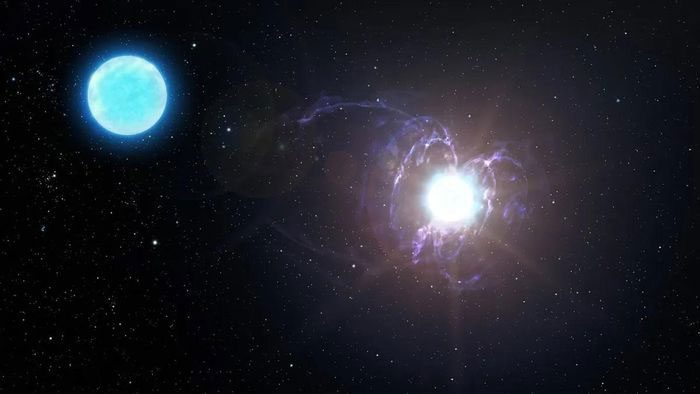A record-breaking discovery of a star with a magnetic field 43,000 times stronger than the sun could help illuminate the mystery of how magnetars form.
Scientists have recently discovered the strongest magnetic star in the universe. The star, known as HD 45166, has a unique helium-rich spectral signature that suggests an unusual origin.

A variant of a neutron star known as a magnetar. (Photo: NOIRLab/AURA/NSF/P).
In addition to setting records, it may represent the early stage in the lifecycle of a magnetar – a type of strange neutron star.
Neutron stars are the densest known celestial objects in the universe. Their highly magnetic versions – called magnetars – possess some of the strongest magnetic fields known in the universe. Neutron stars and magnetars form after massive supernova explosions, when the remaining material from a dead star condenses into an extremely dense and hot object.
However, astronomers are still trying to understand the conditions that lead to magnetars compared to ordinary neutron stars. A new study, published in the journal Science on August 17, may shed light on that process.
Magnetism 43,000 times stronger than the sun
Located 3,000 light-years away in the constellation Monoceros (Unicorn), HD 45166 has puzzled scientists for over a century. This star behaves similarly to a type of extremely bright star known as a Wolf-Rayet star, except it is smaller, dimmer, and has an unusually high concentration of helium. However, no one has proposed a satisfactory theory to explain its strange spectral signature – until now.
Tomer Shenar, an astronomer at the University of Amsterdam and a co-author of the new study, said: “I remember having a Eureka moment while reading the literature: ‘What if this star is magnetic?'”.
Using data from several ground-based observatories, Shenar and his team discovered that HD 45166 is extremely magnetic – a record magnetic field 43,000 times stronger than that of the sun. The researchers suspect that, unlike most giant helium stars that evolve from red supergiants, HD 45166 formed through the merger of two smaller stars. They also believe that in a few million years, it will explode into a modest supernova and re-form as a magnetar.


















































